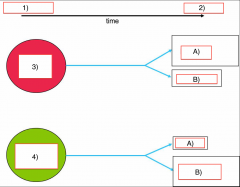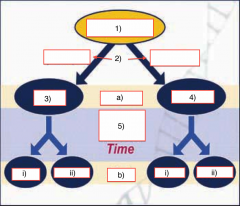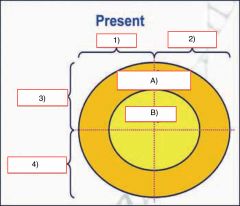![]()
![]()
![]()
Use LEFT and RIGHT arrow keys to navigate between flashcards;
Use UP and DOWN arrow keys to flip the card;
H to show hint;
A reads text to speech;
12 Cards in this Set
- Front
- Back
|
Epidemiology 1) Def. 2) Identifies... 3) Estimates.... 4) Descibes.... |
1) Epidemiology studies the healtheffects of exposures within human populations 2) Identifieshazardous exposures 3) Estimatesthe magnitude of effects fromexposures 4) Describesthe shape of dose-response relationships |
|
|
Whyis environmental epidemiology important when we can test exposures in thelaboratory? Name 3 reason |
1) Most chemicals in occupation orenvironment have not been adequately tested for human health effects 2) Interspecies differences 3) Certain types of exposures orhealth effects do not lend themselves to realistic model systems in thelaboratory A) examples - Injury, Builtenvironment |
|
|
What Knowledge Have We Gainedfrom Environmental Epidemiology? 1) Air pollution 2) Second-hand smoke 3)Radon 4) Sunlight |
1) Air pollution (particulate matter)causes heart attack, stroke, lung cancer 2) Second-hand smoke causes lungcancer 3)Radon in homes causes lung cancer 4) Sunlight causes melanoma, preventsmultiple sclerosis |
|

Progressionof Research in Environmental Epidemiology |
1) OBSERVATION OR HYPOTHESIS TESTING IN highly exposed population : Occupation, accidents/disasters 2) Hypothesis testing low-exposed population: environmentally exposed |
|
|
Methodologicconsiderations in environmental epidemiology Exposure Assessment 1) quantified does is... 2) Sources of info 3) _______ of exposure |
1) ....the goldstandard a) Oftenonly have ever/neveror high/medium/low 2) Sources of information a) Measurements - Environmental, Biologicalsamples b) Questionnaire 3) Timing of exposure |
|
|
Methodologic considerations in environmental epidemiology
Study design (3) 2) For all of these designs, use.... |
1) Cohorts EX: Occupational, Generalpopulation 2) Case-control 3) Cross-sectional 2) therelative risk (RR) to evaluate exposure effect (or odds ratio as estimate of RR. |
|

Cohort Study Design |
1) Study Begins 2) Outcomes 3) Exposed group A) Disease B) No disease 4) Unexposed group A) Disease B) no disease |
|

Case-Control Design |
1) Population 2) Sample 3) Case i) exposed ii) unexposed 4) Control i) exposed ii) unexposed 5) Look back in Time a) Present b) past |
|

Cross-Sectional Design |
1) Cases 2) controls 3) exposed 4) unexposed a) population b) sample |
|
|
Methodologic Considerations: 3.Outcome ascertainment (2 things) 1) Issues of identifying... 2) Biomarkers are... |
1) Issuesof identifying ‘cases’of disease do not differ substantially from other areas of epidemiology 2) Biomarkersare increasingly being used to look at ‘intermediate’effects of environmental exposures |
|
|
Methodologic Considerations: 4.Biases 1) Selection bias 2) Confounding 3) Information bias |
1) Selection bias: People who ‘participate’are healthier than the general population A) Workforce: “healthyworker effect” B) Study participation 2) Confounding: Environmental factorsare often strongly correlated with socioeconomic factors a) Occupation b) Neighborhood 3) Information bias: Can occur withexposure or disease misclassification |
|
|
Take-Home Points – Epidemiology 1) Epidemiology offers a useful tool 2) Different study design 3) Only with ________ can useful ______ be made |
1) Epidemiology offers a useful toolfor identifying and understanding the health effects of environmental exposures 2) Different study designs areappropriate and beneficial for different questions a) Thestate of knowledge and available resources will determine where to start 3) Only with exposure contrast canuseful inferences be made a) Quantitatively-definedexposures are needed for dose-response assessment |

